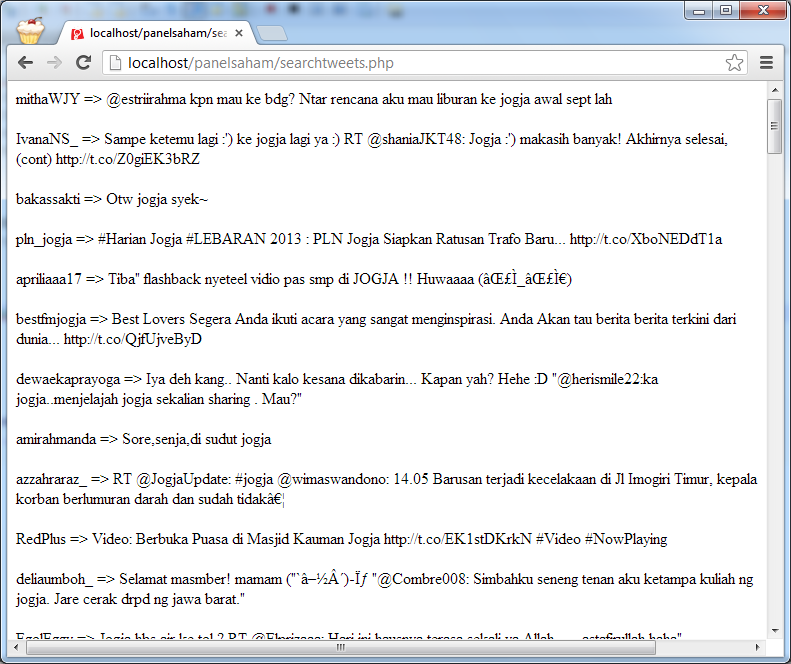Cloud Storage Feature. One of the best tool to store your Graphic designing data online. Download the Full version of Corel draw 12 th version and store the data in Google Drive or OneDrive. If you are worried about your precious data, then you are at the right designing application. Download full version.
- How To Use Twitter Api
- How To Program Twitter Api Javascript
- How To Program Twitter Api Credentials
- How To Program Twitter Api Python
Using python, this tutorial shows you how to make Twitter API calls and manipulate results to get tweets mentioning certain keywords New version: https://www.youtube. https://bravonin.netlify.app/adobe-premiere-cs-portable.html. Nov 12, 2015 This video covers the basics of the twitter API. What are the basic commands -- get, post, stream? How do you search twitter? 10 Programming Languages in ONLY 15 minutes!. Create Your Own Twitter Client Using Java Programming Elisha Chirchir 15 Oct, 2013 23 Comments Java Programming, Twitter API Programming A twitter client does what the Twitter site does as well as the Twitter App.
How To Use Twitter Api
In this text I am going to describe a very straightforward way of how to make use of Twitter’s REST API v1.1. I put some code together for that purpose, so that requesting data just needs the API URL, the API parameters and a vector containing the OAuth parameters.
Before you can get started you have to login to your Twitter account on dev.twitter.com, create an application and generate an “Access Token” for it. So let’s jump right in and fetch IDs of 10 followers of @hrw (Human Rights Watch). The necessary code is located on GitHub – download all three files and then you can just edit the example below as suggested.
You'll begin by writing your Twitter application as a standalone Java program. Eventually you'll integrate the code in a servlet, so that you can offer the application on your site as a service available to other Twitterati. Getting started. Every Twitter application makes use of the Twitter API, which is well documented on the Twitter API wiki.
The result is a JSON containing the IDs of 10 followers (and it looks so pretty thanks to jsonlite::prettify()):
The Ads API program enables businesses to create and manage ads campaigns programmatically on Twitter. To help achieve your business goals, the Ads API provides the following suite of tools: Objective-based campaigns, Analytics, and Targeting. Python API Tutorial - An Introduction to Using APIs Application Program Interfaces, or APIs, are commonly used to retrieve data from remote websites. Sites like Reddit, Twitter, and Facebook all offer certain data through their APIs.
Twitter provides access to its service via a REST API whose current version is 1.1. Authorization is realized through OAuth version 1.0a. Due to that, handling the API is less trivial than just appending your password to the request – but also considerably more secure. Opposed to standard password-based authentication – OAuth distinguishes between the server (Twitter), the third-party client (the program calling the API) and the resource owner (the owner of the API account) by specifying an authentication flow where the resource owner grants access to the third-party client by programmatically providing a secret token in the end. But as in this case the third-party client and the resource owner are effectively identical the process simplifies to just manually creating an access token and its corresponding “token secret” and then using those directly within the script. Referring to the OAuth 1 authentication flow chart – we can skip steps A to F and focus on entirely on G.
The authorization of a request itself happens by glueing together a string which contains all the details about that request – URL, query parameters, OAuth keys and values – and then signing this so called “signature base string” with the two secret tokens –
and
applying an algorithm referred to as HMAC-SHA1. HMAC-SHA1 is provided by the digest package. What you get in the end after some more processing is the
which is sent along with the request and verified by the server. The creation of that signature is implemented in RTwitterAPI/oauth1_signature.R – a detailed description may be found here.
The GET request which is finally sent via RCurl needs a propperly set up header containing an “Authentication” section providing all the various
settings. This part is implemented in RTwitterAPI/twitter_api_call.R. The meaning of the
key/values, as well as the composition of the header is described here.

(original article published on www.joyofdata.de)